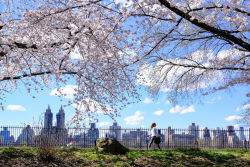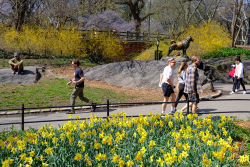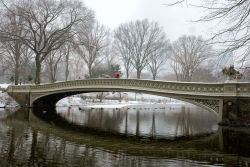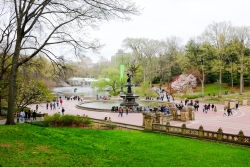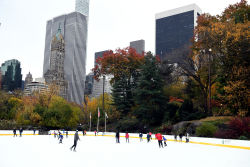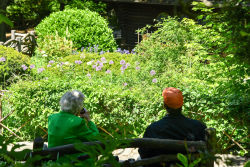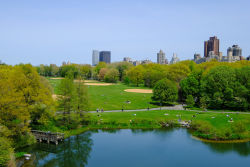Central Park
The Bridges of Central Park - Denesmouth Arch
When Frederick Law Olmsted (1822-1903) and Calvert Vaux (1824-1895) designed Central Park in 1858, they developed an innovative interwoven transportation system of pedestrian paths, bridle trails, and carriage drives. To accommodate all the park users, the designers had to create a compact system of bridges and arches that allowed separate levels of pathways. Vaux and his assistant Jacob Wrey Mould (1825-1886) created 35 uniquely ornamented bridges out of varying materials: brick, granite, marble, cast iron, rustic wood, and rusticated gneiss boulders fashioned from rock outcrops. Modification to the path system over the years has resulted in the creation of four additional arches and the destruction of three original ones.
Denesmouth Arch, so named because it links the Dene (the Scottish word for valley) and the Zoo, was built between 1859 and 1860. It is made entirely of pale olive New Brunswick sandstone. The arch originally sported four elegant bronze lampposts, but none survive today; the only extant ornaments are its quatrefoil circle carvings, representative of the Gothic Revival design that prevails throughout much of the park.
Check out your park's Vital Signs
Clean & Safe
Green & Resilient
Empowered & Engaged Users
Share your feedback or learn more about how this park is part of a
Vital Park System

Know Before You Go
Anticipated Completion: Spring 2024
Anticipated Completion: Spring 2025

Contacts
Central Park Information: (212) 310-6600
Central Park Information (for the Hearing Impaired): (800) 281-5722
Belvedere Castle, The Henry Luce Nature Observatory: (212) 772-0210


